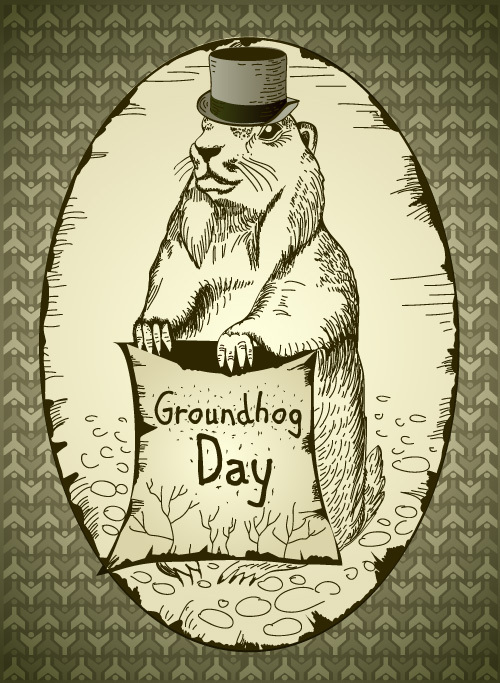Every February 2nd, the weather for the upcoming months is forecast by Punxsutawney Phil, a groundhog living in Pennsylvania. It is said that if Punxsutawney Phil sees his shadow when emerging from his burrow, then winter will last another six weeks. If he does not see his shadow, then spring will arrive early. In celebration of Groundhog Day, here are some interesting facts about how a groundhog became a weatherman and what makes the species unique.
Punxsutawney Phil
- Groundhog Day has its roots in the European tradition of Candlemas, where candles would be distributed for the winter and many felt that the weather on that day determined how long winter would last. Germans expanded on this idea and selected an animal, the hedgehog, as a means of foretelling the weather. German immigrants brought this tradition to the United States and selected the groundhog as the animal meteorologist.
- Punxsutawney Phil was celebrated for the first time in 1887 when he emerged from his burrow in Gobbler’s Knob to forecast the spring weather.
- His full name is “Punxsutawney Phil, Seer of Seers, Sage of Sages, Prognosticator of Prognosticators, and Weather Prophet Extraordinary.”
- While he may be a unique weatherman, he’s not always accurate with his predictions. Since 1887 his predictions have only been correct about 39% of the time.
Groundhogs
- Groundhogs also called woodchucks, whistle-pigs, land beavers, or the mouse bear, are found in central and eastern states, as well as parts of Alaska and Canada.
- Groundhogs have brown fur, small ears, and a tail. In the wild, they live six to eight years and weigh around 12-15 pounds.
- They eat mostly plants, such as clover, dandelions, grass, and fruit, but also eat insects and snails.
- They can climb trees and swim, and whistle when frightened.
- Groundhogs hibernate from late fall until February or March. During hibernation, their body temperature drops from 99° to 40°, and their heart rate slows from 80 beats per minute to five.
- Groundhog burrows are much more than a simple hole. They are complex tunnels with lengths of anywhere from 8 to 66 feet long, and multiple chambers for food storage, nesting, hibernating, and even separate bathroom areas.
- Groundhogs are considered pests by many farmers because they can get inside fenced areas by digging and are then able to feast on the farmer’s crops.
- Groundhogs are responsible for uncovering a historic village in central Ohio – now a famous archaeological site.
Sources: LiveScience.com, History.com, CNN.com, Havahart.com, and NationalGeographic.com.




